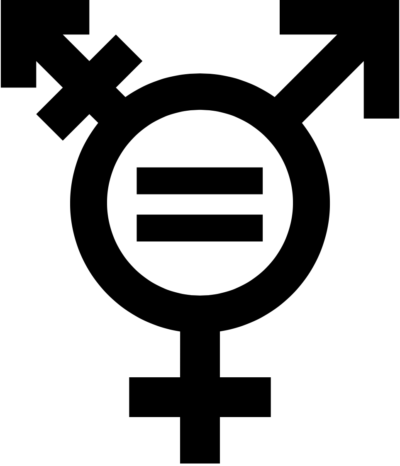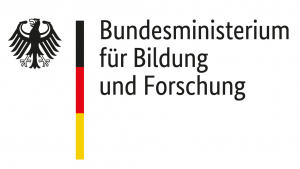 Language shapes the way we think. Lera Boroditsky, Associate Professor of Cognitive Science at University of California San Diego, supported this statement with her contribution to the TED conference in Monterey, CA by giving several examples from languages all over the world where this is the case. Further, studies have shown that people mostly think of male individuals when they hear words such as „doctor“, „professor“ or less surprisingly „policeman“. As language defines how we see and describe the world around us, it is also clear that the language we use has to evolve to correspond to the changes in perception towards this world. Nowadays, it is still necessary for women as well as people who identify as non-binary to fight for awareness and equality. Language plays an important role in this process. However, there are still a lot of debates about whether or not we need gender-inclusive language and how it should be approached. In English, common rules on gender-inclusive languages have not been established yet. Still, I would like to present you some guidelines you can adopt to make your writing more inclusive.
Language shapes the way we think. Lera Boroditsky, Associate Professor of Cognitive Science at University of California San Diego, supported this statement with her contribution to the TED conference in Monterey, CA by giving several examples from languages all over the world where this is the case. Further, studies have shown that people mostly think of male individuals when they hear words such as „doctor“, „professor“ or less surprisingly „policeman“. As language defines how we see and describe the world around us, it is also clear that the language we use has to evolve to correspond to the changes in perception towards this world. Nowadays, it is still necessary for women as well as people who identify as non-binary to fight for awareness and equality. Language plays an important role in this process. However, there are still a lot of debates about whether or not we need gender-inclusive language and how it should be approached. In English, common rules on gender-inclusive languages have not been established yet. Still, I would like to present you some guidelines you can adopt to make your writing more inclusive.
While tackling your language use, you can come across a number of different areas that can be improved in regard to gender-inclusiveness. We will be addressing them step by step, offering you alternatives you can use instead. There are changes that might not be appropriate in all the contexts. Some options might also sound bizarre in some contexts or if over-used. The correct use of the different options also depends on your personal style, the person you write about and/or the person you address. If you are writing a paper you need to hand in (and/or which is being graded), you might also want to make sure that your reader(s) are okay with the language you use. Go talk to them beforehand and/or clarify your choice in a footnote to your text. It could also be helpful, if it is possible, to ask the people you write about how they would like to be addressed.
1. Gendered nouns
As shown in the introductory paragraph, English is full of terms that give away the gender of the adressed person: policeman, chairman, fireman. We also find such examples in offical documents: „all men are created equal“ (the Declaration of Independence, 1772). Female or non-binary persons might feel discriminated against or at least not represented by those male-centred terms. Therefore, it is more appropriate to change these terms to more gender-neutral ones. Let’s compare some examples:
| Gendered noun | Gender-neutral noun |
|---|---|
| man | person, individual |
| mankind | people, human beings, humanity |
| freshman | first-year student |
| policeman | police officer |
| man-made | artificial, synthetic |
| chairman | chairperson, coordinator, head |
If you cannot come up with a gender-neutral noun to the specific gendered noun you seek, go have a look at a thesaurus to help you!
2. Pronouns
Unfortunately, simply choosing gender-neutral terms over gender-specific terms will not do on its own to make your writing more inclusive. During your writing process, you will certainly face situations where you are wondering which pronoun is the appropriate one to use in your context. As you know, the English language only knows the gender-specific pronouns he and she to refer to a person (whereas it only refers to objects and unknown animals). In the past, the use of what we call the generic he was most common. This is why in common speech you will often find examples like: „If a student doesn’t study everyday, he will fail his exams.“ This, of course, might lead to the understanding that female or non-binary persons are not included into the group of people. Luckily, you can tune your usage of pronouns in cases where you don’t know the gender or the gender is irrelevant or you want to include everyone – regardless of their gender:
2.1 Using more than one pronoun
One way to approach this problem is using he or she (and their derived forms his or her, him or her, etc.) when they do not know the gender.
This may work in some contexts, but the overuse of this strategy might quickly sound awkward to the recipient, e.g when we take our example from above:
Furthermore, this strategy does not include persons who do not identify themselves either as male or female.
2.2 Eliminating the pronouns
In some cases, it could simply be enough to get rid of the pronouns you used. You could use articles instead as demonstrated in the following example:
Each student handed a portfolio in to the teacher.
Obviously, this is a strategy only to avoid gender-specific possessive pronouns. But how about other classes of pronouns?
2.3 Shifting from singular to plural
Depending on your context, shifting your sentences from singular to plural may often be an excellent option. Instead of having to use „he“ or „she“, this allows you to use „they“ and its derived forms in your writing.
… would then become …
This strategy also works in sentences including indefinite pronouns. Compare those two sentences:
People who want to learn a new language should integrate it into their every-day lives.
This is a very effective option to avoid gender-specific pronouns in your written and your oral language, but what can you do if you want to address one person in particular and you do not know the gender, it is irrelevant or the person is non-binary?
2.4 The ’singular they‘
To solve this problem, you could use an alternative which already is not uncommon in conversational English: the singular they. You might have already come across it in sentences like „Somebody forgot their coat.“ or a dialog like this:
Speaker B: Oh, what did they think of the food?
Speaker A does not mention the gender of his friend as it is not relevant for the conversation, so speaker B refers to the friend as they.
Although the gender neutral third-person singular they is still a matter of debate in academic settings as well as among journalists and publishers who prefer traditional grammar, this alternative has gained increasing popularity in the community while even some official institutions decided to adopt it.
Here you can see that the writer of the sentence used they to either point out that John’s gender is either unknown or unimportant for the content of the sentence. John might also not identify with the traditonal binary of male and female.
2.5 Invented gender-neutral pronouns
Although the ’singular they‘ appears to be the most appropriate option as a gender-neutral pronoun discussed so far, it can also cause confusion in some contexts.
John tied their shoes.
In the examples above, one might as well wonder who is late to the party and whose shoes John was tying. Were they John’s own shoes and was John the one who was late or is the speaker talking about more than one person? To avoid confusion, it could be clarified before that John refers to themself as they.
In the past, a vast amount of neologisms has been proposed in order to tackle these confusions: Ne, Ve, Ze, Xe – to mention just some of the more popular ones. None of those invented gender-neutral pronouns has officialy been approved or adopted into the common usage of the English-speaking world. Still, you will find users of each of those pronouns within the transgender-/genderqueer-community. Likewise, you will find people who refer to themselves as they or who are totally okay with the use of he or she. Therefore – if possible, I would highly recommend that you always ask how the person you are talking with/of wants to be addressed.
2.6 Other alternatives
- With the intention of avoiding gender-specific pronouns where they are not appropriate, you can possibly replace the pronoun by the noun it refers to. In some cases, it is also possible to omit the pronoun altogether.
The professor can revoke the grade, but the professor cannot expel a student from class.
The professor can revoke the grade, but cannot expel a student from class.
- Another possible option could be the alternate use of male and female pronouns and expressions
Let each student participate. Has she had a chance to talk? Could he feel left out?
I mention these alternatives here last only for the sake of completeness. With replacing the gender-specific by the noun it refers to, you risk sounding too repetitive and this might not be the best option in terms of style. When it comes to the alternate use of male and female pronouns, you might risk confusing your audience as well as excluding people who do not identify with the traditional binary. Take this into account when considering these alternatives.
Unfortunately, the English language, unlike other languages, does not yet provide one single solution when it comes to the use of an officially approved gender-neutral pronoun. Maybe one day, English might follow the example of Swedish. In 2015, the Swedish Academy included the gender-neutral pronoun hen (in addition to han „he“ and hon „she“) into the Svenska Akademiens ordlista, the most authoritative glossary on the Swedish language. Until that day, we have to content ourselves with the alternatives we have in order to bypass non-inclusive language.



